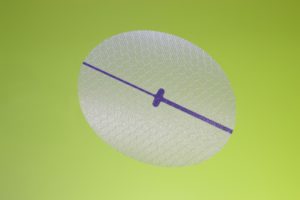 An umbilical hernia, also known as a “herniated belly button,” is very common in babies and adults. In severe cases, mesh patches are stitched under the navel to prevent the hernia from opening up and needing another surgery.
An umbilical hernia, also known as a “herniated belly button,” is very common in babies and adults. In severe cases, mesh patches are stitched under the navel to prevent the hernia from opening up and needing another surgery.
Do I have a Hernia Mesh Patch Lawsuit? If you or a loved one was diagnosed with surgery complications, contact our law firm immediately for a free case consultation. If you file a lawsuit, you could receive compensation for your injury, medical expenses, and more.
What is an Umbilical Hernia?
Umbilical hernias occur when intestines or fatty tissue squeezes out through a hole in the muscles near the navel or belly button (umbilicus). About 20% of babies are born with an umbilical hernia, but most go away on their own. They are also common in adults.
What Causes a Herniated Belly Button?
In adults, anything that increases pressure inside the abdomen can cause an umbilical hernia. In babies, they usually occur when a natural hole in the abdomen for the umbilical cord does not close completely shortly after birth.
Symptoms of a Belly Button Hernia
Umbilical hernias create a soft bulge over the belly button. It is more visible when coughing, straining, or sitting up. Large hernias can be uncomfortable but they are usually painless. Severe pain and vomiting are signs that the hernia is strangulated.
Strangulated Umbilical Hernias
Strangulated umbilical hernias are life-threatening and require emergency surgery. They occur when a loop of intestines inside the hernia is squeezed so tightly by surrounding muscles that the blood-supply is cut off. This can obstruct bowel movements and cause necrosis (tissue death) within 8-12 hours. It can also cause an intestinal perforation.
Risk-Factors for Umbilical Hernias
- Premature birth or low birth-weight
- Down’s Syndrome
- Obesity or being overweight
- Pregnancy (especially with twins, triplets, etc.)
- Lifting heavy objects
- Stomach surgery
- Large amount of fluid in the abdominal cavity
- Persistent coughing or sneezing
- Trouble urinating due to enlarged prostate
- Chronic constipation
Diagnosis & Tests
Umbilical hernias are easily diagnosed in babies with a physical exam shortly after birth. The diagnosis is sometimes harder in adults, especially adults who are obese. For a conclusive diagnosis, the patient may need to have an ultrasound or CT scan.
Does My Hernia Need Treatment?
Umbilical hernias rarely need treatment. In babies, 90% of umbilical hernias close on their own by the time the child is 5 years old. If it does not, they may need surgery. In adults, surgery necessary if the hernia is large (over 4-cm) or causing complications.
Herniated Belly Button Surgery
Surgery is straightforward unless the hernia is very large. When the patient is anesthetized, the surgeon makes a small incision in the belly button and pushes the loop of intestines back inside the abdominal cavity. Mesh patches are sometimes stitched inside to reinforce the surrounding muscles. Then the hole is stitched closed.
Do I have a Hernia Mesh Patch Lawsuit?
The Defective Medical Device Litigation Group at our law firm is an experienced team of trial lawyers that focus on the representation of plaintiffs. We are handling individual litigation nationwide and currently accepting new cases in all 50 states.
Free Hernia Mesh Patch Lawsuit Evaluation: Again, if you or a loved one was diagnosed with a serious side effect, you should contact our law firm immediately. You may be entitled to compensation by filing a lawsuit, and our lawyers can help.
Attention Lawyers: Schmidt & Clark, LLP considers a referral from another lawyer to be one of the greatest compliments. Our law firm has built a reputation for success and accepts a number of case referrals on a regular basis. We do not publish prior verdicts or settlements on our website. If you would like to refer us a case or for us to send you a profile of prior award judgments or average referral fees, please fill out the form below.

